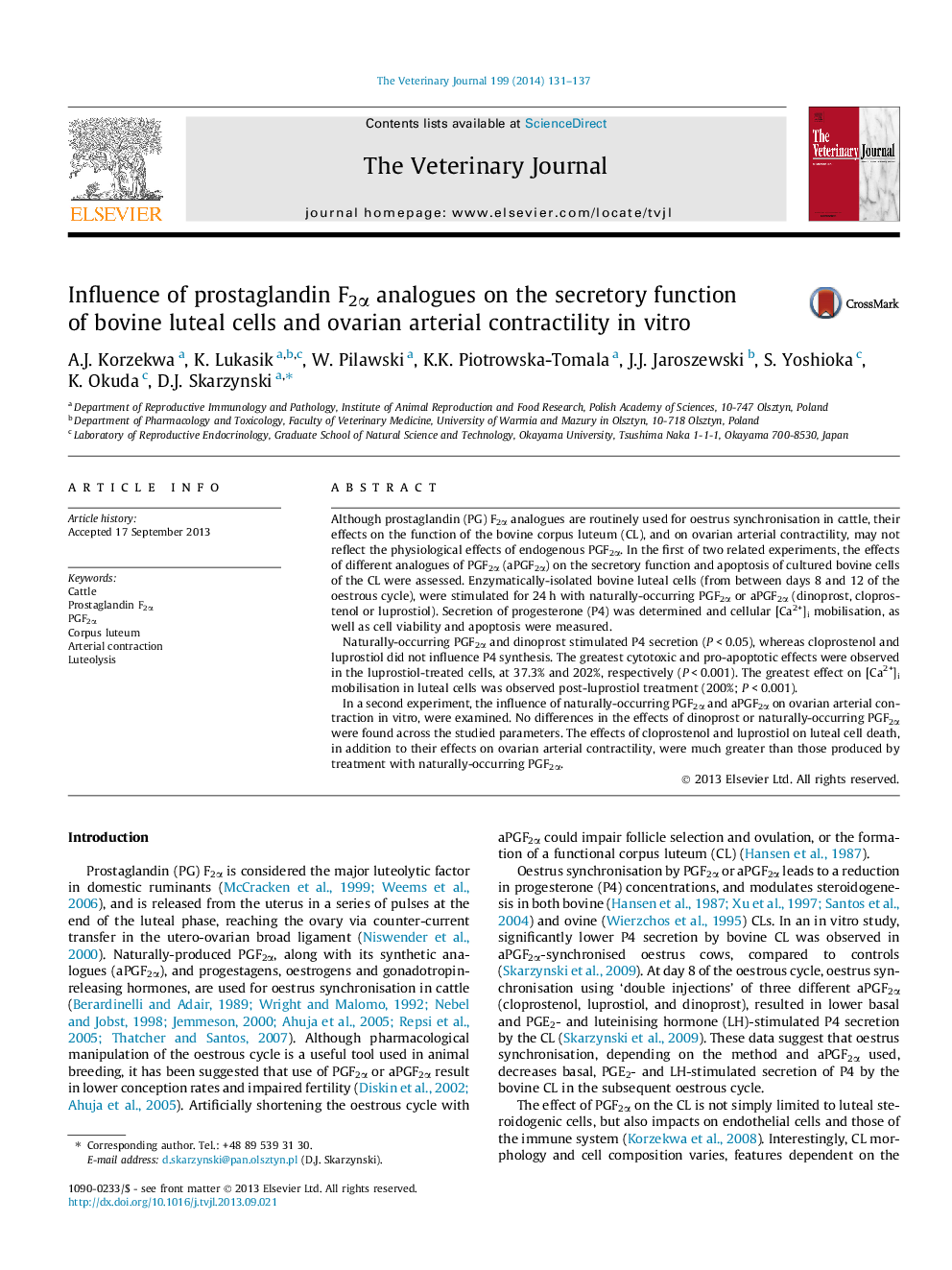| Article ID | Journal | Published Year | Pages | File Type |
|---|---|---|---|---|
| 5798622 | The Veterinary Journal | 2014 | 7 Pages |
Although prostaglandin (PG) F2α analogues are routinely used for oestrus synchronisation in cattle, their effects on the function of the bovine corpus luteum (CL), and on ovarian arterial contractility, may not reflect the physiological effects of endogenous PGF2α. In the first of two related experiments, the effects of different analogues of PGF2α (aPGF2α) on the secretory function and apoptosis of cultured bovine cells of the CL were assessed. Enzymatically-isolated bovine luteal cells (from between days 8 and 12 of the oestrous cycle), were stimulated for 24 h with naturally-occurring PGF2α or aPGF2α (dinoprost, cloprostenol or luprostiol). Secretion of progesterone (P4) was determined and cellular [Ca2+]i mobilisation, as well as cell viability and apoptosis were measured.Naturally-occurring PGF2α and dinoprost stimulated P4 secretion (P < 0.05), whereas cloprostenol and luprostiol did not influence P4 synthesis. The greatest cytotoxic and pro-apoptotic effects were observed in the luprostiol-treated cells, at 37.3% and 202%, respectively (P < 0.001). The greatest effect on [Ca2+]i mobilisation in luteal cells was observed post-luprostiol treatment (200%; P < 0.001).In a second experiment, the influence of naturally-occurring PGF2α and aPGF2α on ovarian arterial contraction in vitro, were examined. No differences in the effects of dinoprost or naturally-occurring PGF2α were found across the studied parameters. The effects of cloprostenol and luprostiol on luteal cell death, in addition to their effects on ovarian arterial contractility, were much greater than those produced by treatment with naturally-occurring PGF2α.
